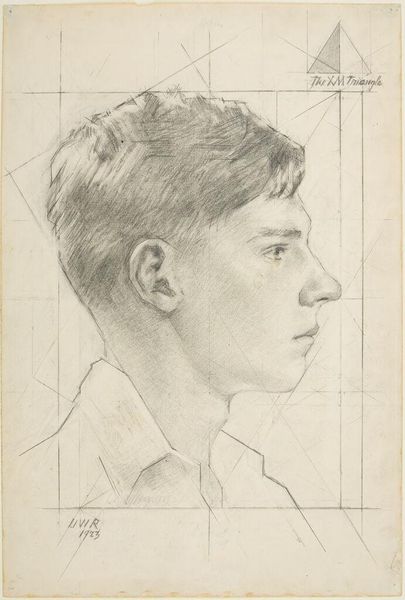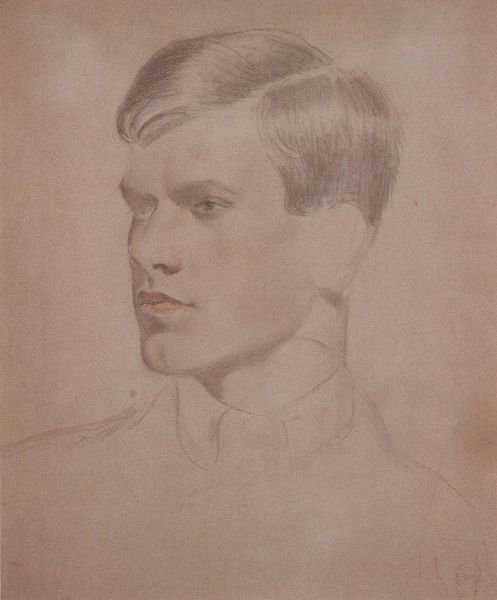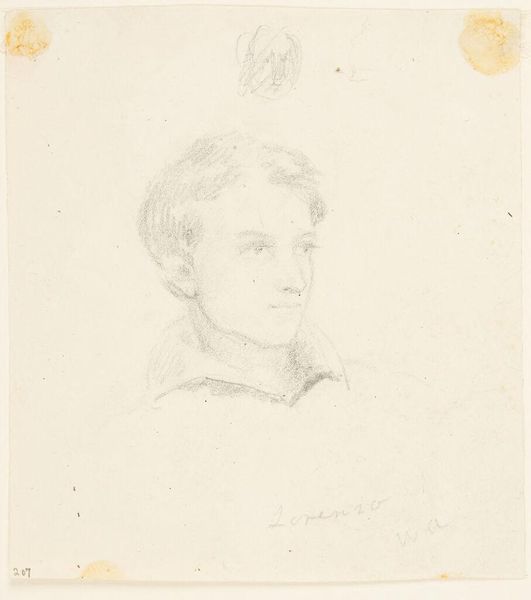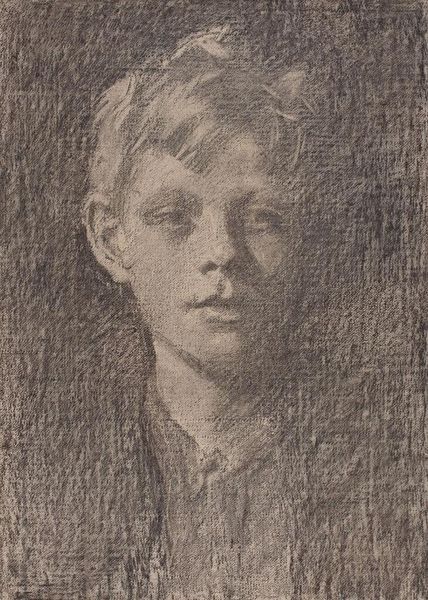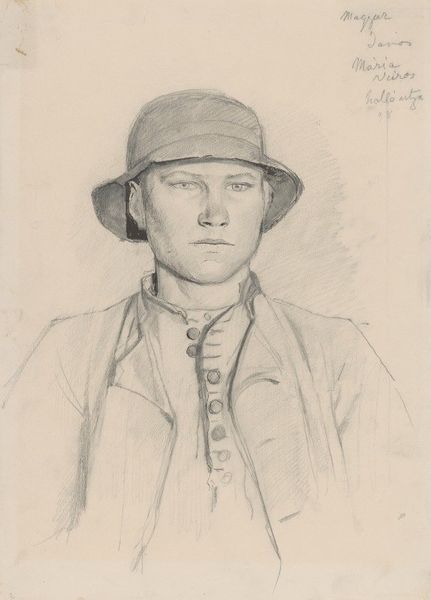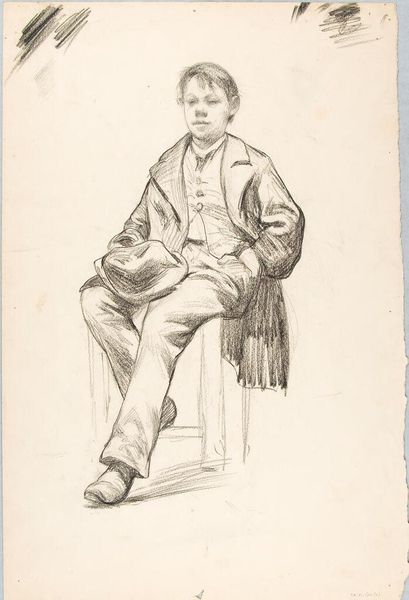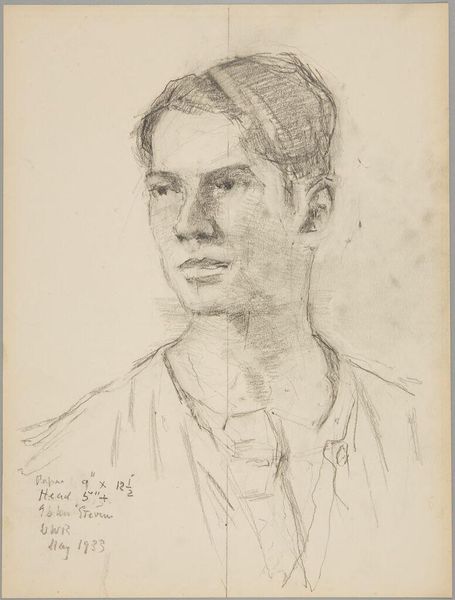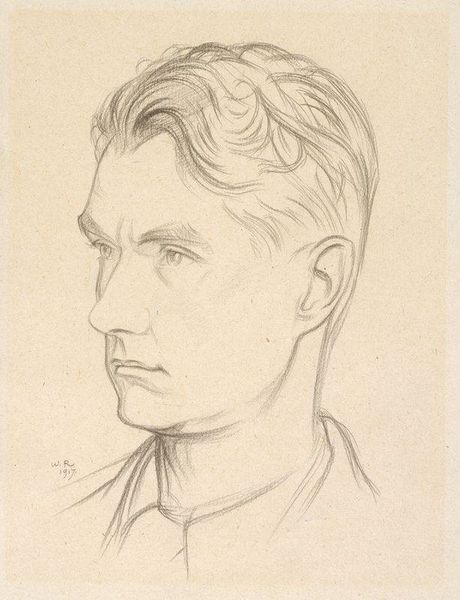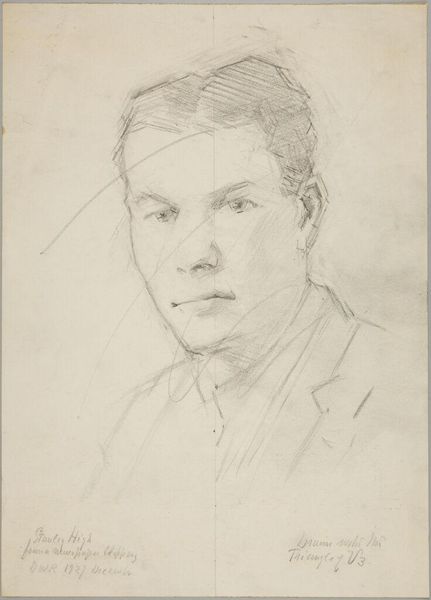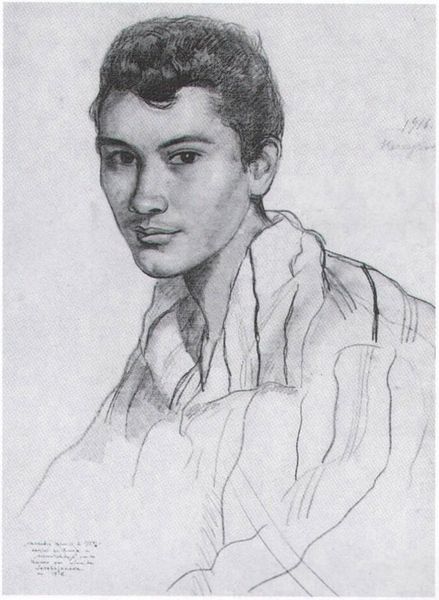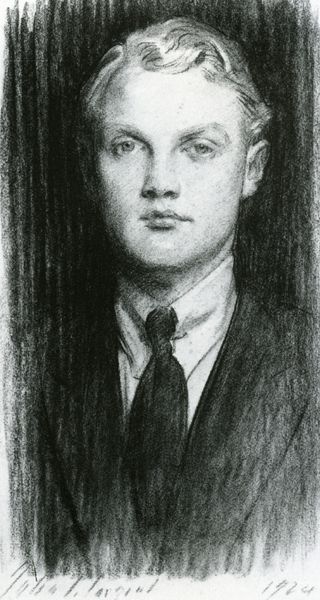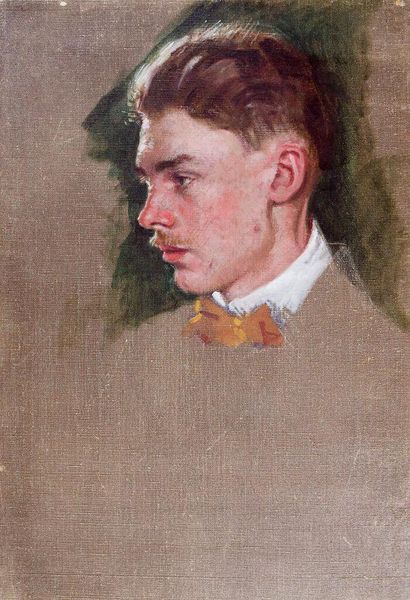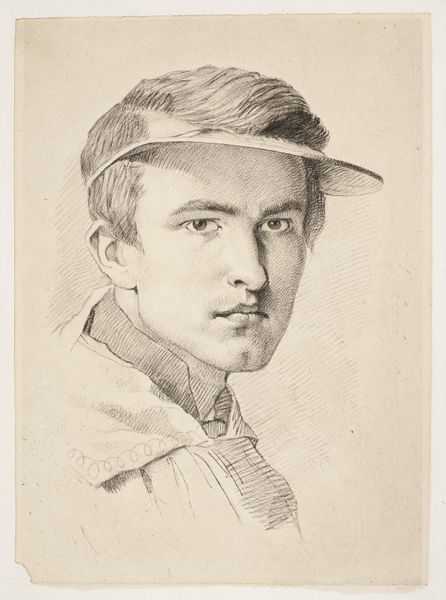
drawing, pencil
#
portrait
#
drawing
#
pencil
#
portrait drawing
#
academic-art
#
modernism
#
realism
Copyright: Public Domain: Artvee
Curator: I am drawn to the emotional restraint of this portrait. It’s rendered with a focused intensity. Editor: And that focus underscores Sargent’s talent as a draftsman. This is “Portrait of Henry Sturgis Russell,” made with pencil on paper in 1924. We immediately sense his self-possession, and yet it is so understated. What meanings might we extrapolate from such an individual’s presence in the context of the early 20th century? Curator: Absolutely. Russell represents the established elite of that time, inheritors of social and economic power. This image exudes a specific type of stoicism—the 'stiff upper lip,' so to speak—a characteristic deeply embedded in dominant, patriarchal structures. I see in this representation, more than a likeness, the weight of responsibility he would have carried in upholding a certain established social order. The composition is not overtly flattering, emphasizing, instead, the somber realities tied to his lineage. Editor: That somber tone seems also emphasized by the limited tonal range. Sargent evokes this serious attitude with subtle nuances, but it isn't quite an effusive depiction. Symbolically, his attire—an open-collared shirt, paired with a jacket—conveys both ease and authority, revealing an intentional juxtaposition. It could be said this signals a modern man negotiating societal shifts. Curator: This portrayal opens up to broader dialogues, suggesting reflections on class and male identity, resonating through social reform movements during that period. I agree on this ambivalence, because, for the viewer today, that negotiation is also a power dynamic and an exercise of privilege. Editor: What also strikes me is the classical artistic training, and its potential expression of this specific, embedded class dynamic, almost serving to justify, reify, or naturalize social standing. Curator: Agreed. The skill itself becomes a marker of class. Looking closer I noticed his features appear both soft, as though retaining traces of youth, yet decidedly stern. Perhaps signaling his emergence into a world demanding certain sacrifices. Editor: Ultimately, "Portrait of Henry Sturgis Russell" challenges our contemporary assumptions by subtly portraying privilege. Curator: The act of looking prompts critical assessments of our own perceptions.
Comments
No comments
Be the first to comment and join the conversation on the ultimate creative platform.
